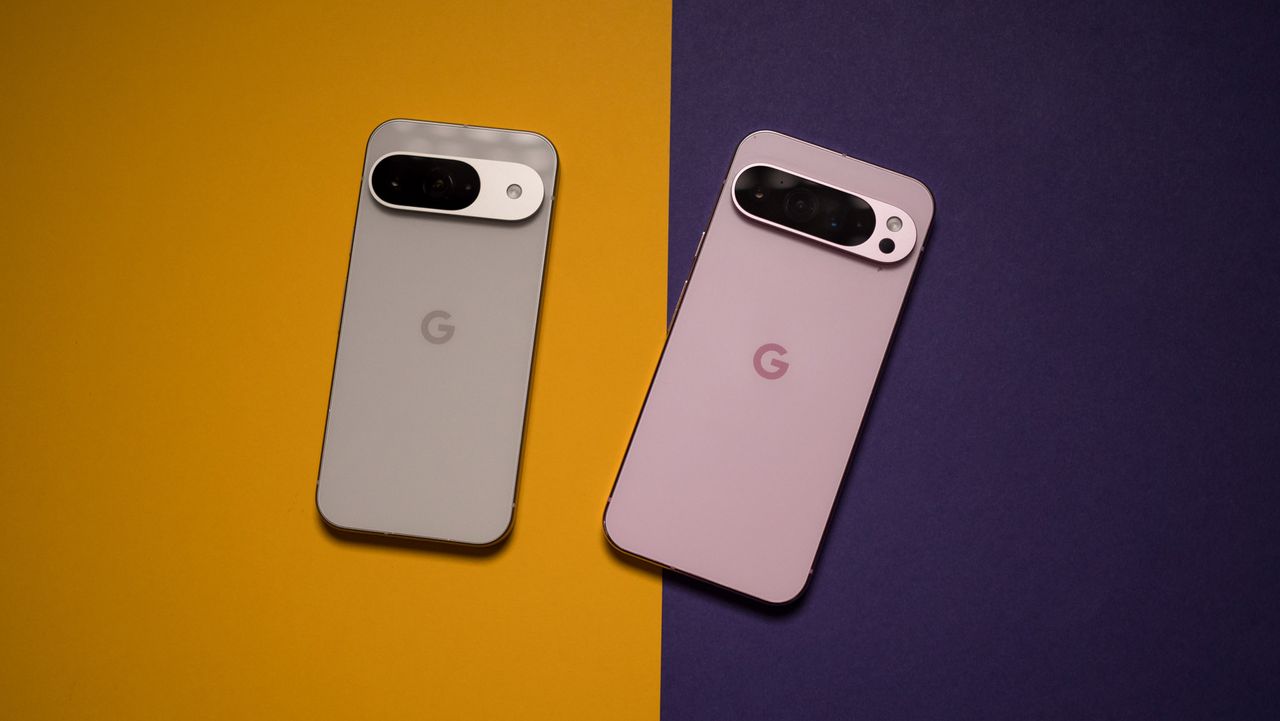
It's no longer the newest Pixel series in town, but that doesn't mean the Google Pixel 9 is out of the game just yet. A price drop is sure to follow the Pixel 10's recent release, and its seven-year update promise will definitely make the Pixel 9 one sweet deal.
Google proclaimed the Pixel 9 was its best creation to date, back when the family of phones debuted. Its sleek and premium designs paired well with vibrant colorways, superb cameras, and stellar software. Currently, the Pixel 9 family spans price points of $499 through $1,799, consisting of the Pixel 9a, Pixel 9, Pixel 9 Pro, Pixel 9 Pro XL, and Pixel 9 Pro Fold. It's gotten even better with Material 3 Expressive and Android 16.
Our Google Pixel 9 review also details how you can save some money and opt for the less expensive model, and the Google Pixel 9 Pro and 9 Pro XL review details how Google finally gave customers a choice of size for the highest-spec hardware Google has ever made. Depending on how much money you've got, your choice will vary considerably. Our one-year verdict on the Pixel 9 is also out, which you can read here.
This guide focuses on the three main Pixel 9 devices. For a thorough overview of the Pixel 9 Pro Fold, check out our review and hands-on articles. And if you're here for the Pixel 9a, we've got an overview of the midranger here. For everything else that you need to know about the Pixel 9 lineup, scroll down to learn more!
Google Pixel 9: Price and availability
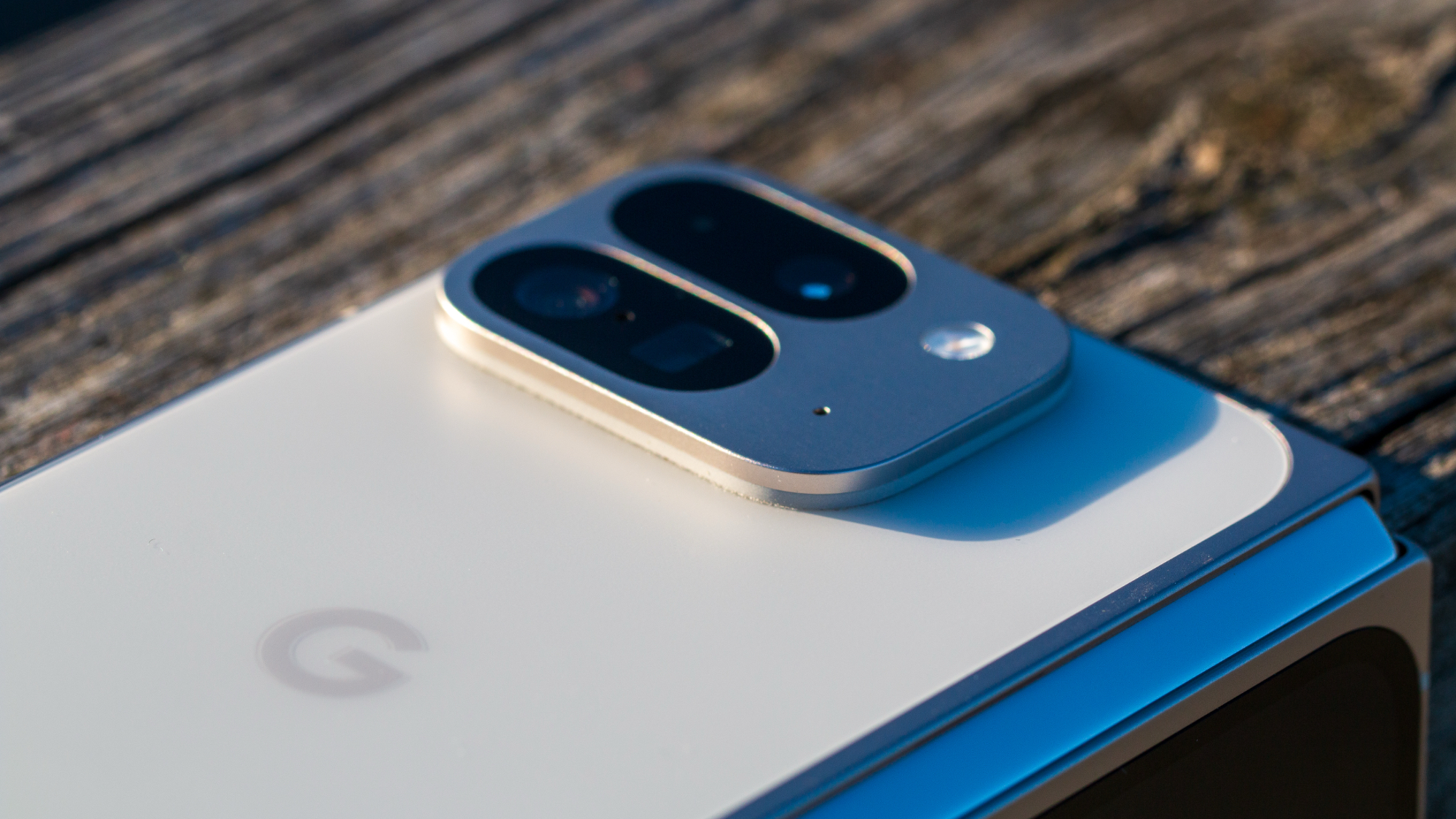
Although Google launched four phones as part of the Pixel 9 series, only three of the models are widely available and regarded as the main Pixel 9 lineup. This consists of the Google Pixel 9, Pixel 9 Pro, and Pixel 9 Pro XL, as well as the Pixel 9 Pro Fold in select regions. Released much later, the Pixel 9a is also considered a part of the family now.
The Pixel 9a is the smallest and cheapest at $499, while the Pixel 9 is an upper-mid-range flagship starting at $799. Meanwhile, the Pixel 9 Pro keeps the comfy smaller size and adds in Pro-level telephoto cameras and extra RAM for $999.
The Pixel 9 Pro XL features the same hardware as the Pixel 9 Pro, just with a larger 6.8-inch display and a battery size increase to keep up with a larger display.
While the Google Pixel 9 and 9 Pro XL were readily available at launch, the Google Pixel 9 Pro hit the shelves a little later in some regions. The Pixel 9, Pixel 9 Pro, and Pixel 9 Pro XL are available in the following countries:
- NAMER: US, Canada
- EMEA: Austria, Belgium, Czechia, Denmark, Finland, France, Estonia, Germany, Hungary, Ireland, Italy, Latvia, Lithuania, Netherlands, Norway, Poland, Portugal, Romania, Slovakia, Slovenia, Spain, Switzerland, Sweden, UK
- APAC: Australia, India, Japan, Malaysia, Singapore, Taiwan
Meanwhile, the Google Pixel 9 Pro Fold has very limited availability and can be bought in the following regions:
- NAMER: US, Canada
- EMEA: UK, Ireland, Germany, Austria, Switzerland, France, Norway, Denmark, Sweden, Finland, Netherlands, Belgium
- APAC: Japan, Australia, Taiwan, India, Singapore
Starting price |
Storage options |
Colors |
|
|---|---|---|---|
Google Pixel 9a |
$499 |
128GB, 256GB |
Obsidian, Porcelain, Iris, Peony |
Google Pixel 9 |
$799 |
128GB, 256GB |
Obsidian, Porcelain, Wintergreen, Peony |
Google Pixel 9 Pro |
$999 |
128GB, 256GB, 512GB, 1TB |
Obsidian, Porcelain, Hazel, Rose Quartz |
Google Pixel 9 Pro XL |
$1,099 |
128GB, 256GB, 512GB, 1TB |
Obsidian, Porcelain, Hazel, Rose Quartz |
Google Pixel 9 Pro Fold |
$1,799 |
256GB, 512GB |
Obsidian, Porcelain |
All Pixel 9 models include Pixel VPN at no additional cost. To add even more value, Google is also including one year of Gemini Advanced with every Google Pixel 9 Pro or 9 Pro XL, which would normally cost $20 per month with the AI-tier Google One subscription. The regular little Pixel 9 only includes one free month of Gemini Advanced.
You can buy a Google Pixel 9 right now, and the great news is that there are many Pixel 9 deals that'll get you the phone for far less than the retail price. You should avoid paying for a Pixel 9 at full MSRP. With the Pixel 10 launch around the corner, you should wait and take advantage of the juiciest Pixel 9 stock clearance sales that are sure to happen very soon.
Google Pixel 9: Pro vs. regular
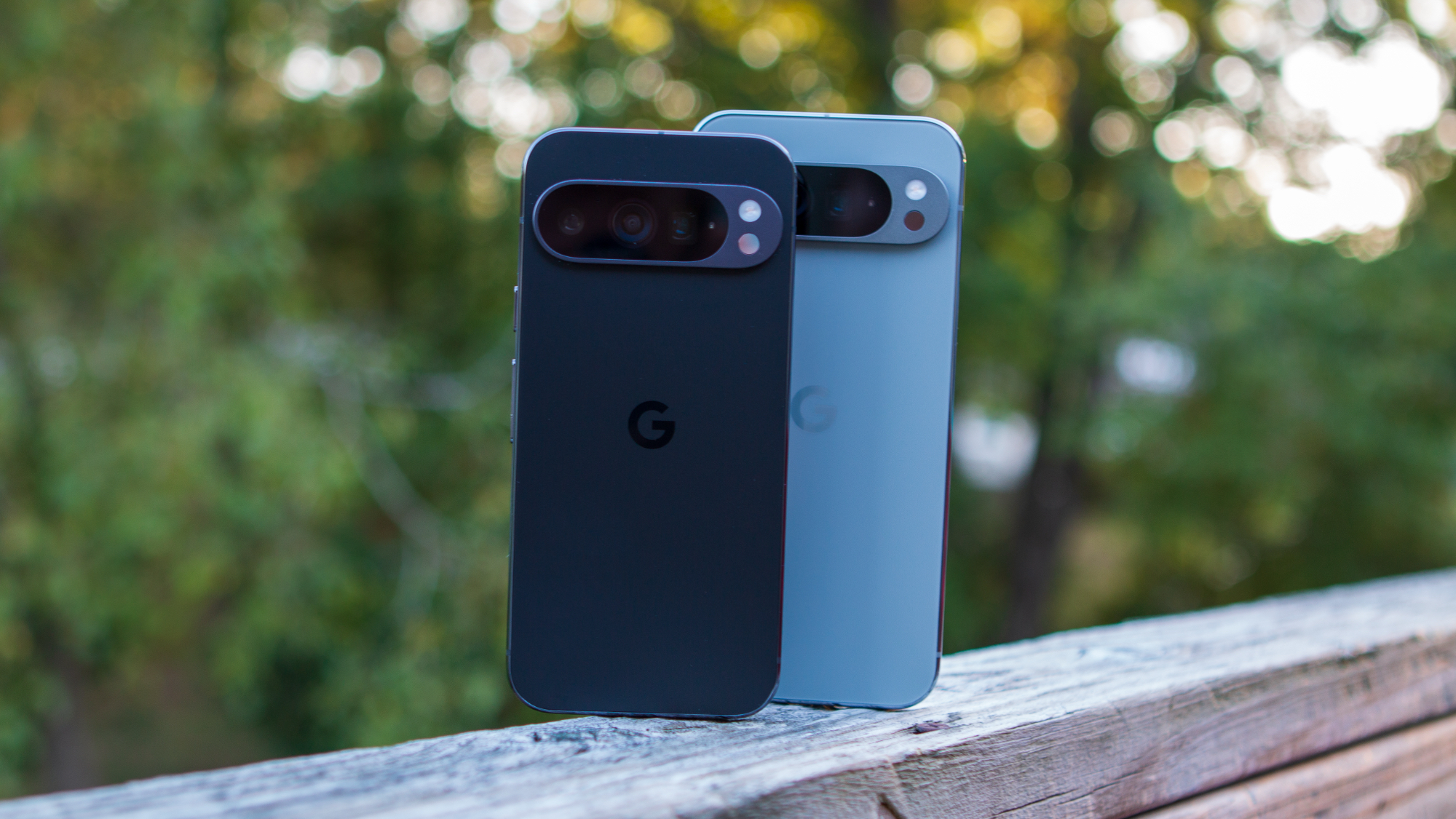
To the joy of Pixel fans, Google offers two Pro models that allow customers to choose a size and still get cutting-edge hardware from the company. The 9 Pro and 9 Pro XL are nearly identical, but the former brings maxed-out specs to a smaller form factor. You should know that the Pixel 9 Pro XL is similar to the outgoing Pixel 8 Pro in terms of screen size, not the Pixel 8.
As a result, cases made for the base Pixel 9 will also work with the Pixel 9 Pro and vice versa — which is neat.
But not everyone wants to spend $1,000 or more on a new phone. That's where the regular Google Pixel 9 comes in with its $799 price tag. Despite the price hike, the Pixel 9 series has been a hit, earning Google a double-digit market share for the first time.
But there are some trade-offs you'll need to consider when making the decision. First off, the regular Pixel 9 doesn't include a telephoto camera lens on the back. That means camera zoom is limited to 8x, and any zoom beyond 3x won't look as good as it will on a Pixel 9 Pro model.
The selfie camera on the front is also lower resolution, with the Pixel 9 packing in a 10.5MP sensor while both Pro models upgrade that to a 42MP sensor. The Pixel 9 Pro and Pixel 9 Pro XL also include a temperature sensor on the back as well as an Ultra-Wideband chip inside. The temperature sensor cannot be used on humans, making it more of a gimmick, but it can be handy sometimes.
There are several hardware and software differences between the regular Pixel 9 and the Pro models.
Zoom Enhance is a feature available to all Pixel 9 Pro and Pixel 9 Pro XL models, as well as the older Pixel 8 Pro. It uses AI to enhance photos that you've taken, but it's mainly designed to help enhance zoomed-in photos. This can mean a photo straight from the telephoto camera or one that you've zoomed into afterwards. It's not available on the regular Pixel 9.
Additionally, the Pixel 9 Pro and Pixel 9 Pro XL feature 8K video recording powered by Video Boost, Video Boost, Night Sight Video, Super Res Zoom Video, and a nifty manual camera mode so you can make granular adjustments to ISO, shutter speed, and more.
While you no longer need Gemini Advanced to use the new Gemini Live feature, the Pixel 9 Pro and Pixel 9 Pro XL come with a free year of Gemini Advanced; the Pixel 9 only comes with one free month. You can always buy one of the various Google One packages that include Gemini Advanced.
Google Pixel 9: Design and displays
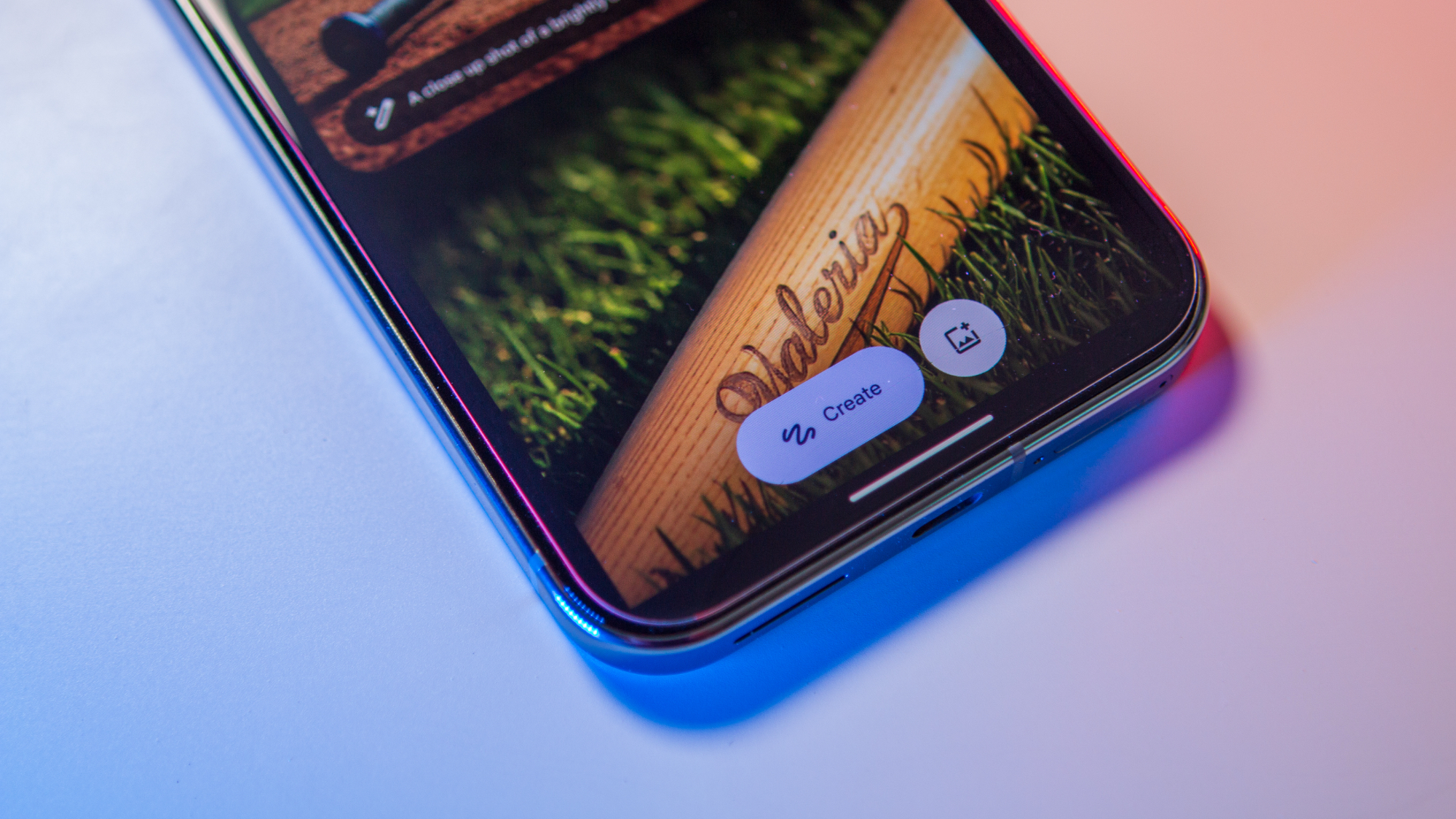
The Google Pixel 9 series represented the biggest change in design since the Pixel 6, which introduced the world to the Pixel camera bar. With the Pixel 9, Google took on a far more industrial look with its phones, featuring flat side rails, flat glass on the front and back, and a separate camera island on the back instead of a camera bar. Many have compared the ensemble to that of the iPhone 15 and 16 series, and they're not wrong.
Happily, the Pixel 9 series comes in two main sizes, so you don't have to sacrifice power over a smaller size. The Pixel 9 and Pixel 9 Pro feature identical dimensions, with the Pixel 9 Pro weighing just 1g more. The Pixel 9 Pro XL allows users to choose a larger size while keeping Google's "Pro-level" cameras on the back.
Pink was a really popular color with smartphones during the Pixel 9 launch period. Google added it to the roster this time around, offering two different blushing shades depending on the Pixel 9 variant you choose. When picking colorways, an important thing to remember is that not all phones are available in all memory options for each color. The smaller Pixel 9 sports a matte back glass and matte side rails and comes in four colors, which you can see here:
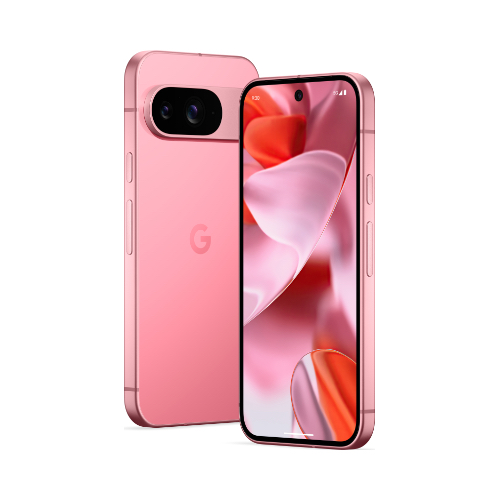
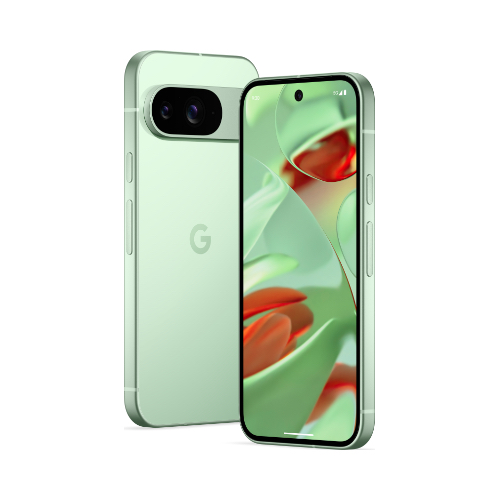
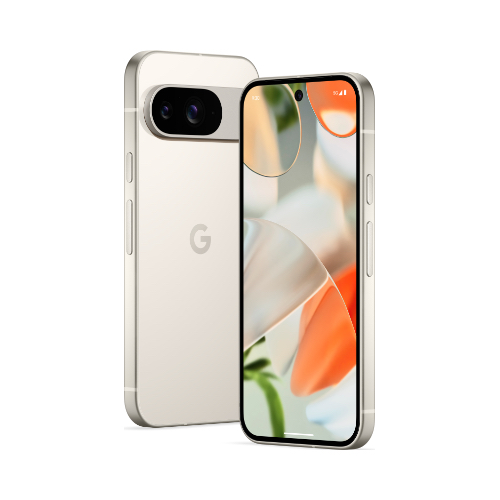
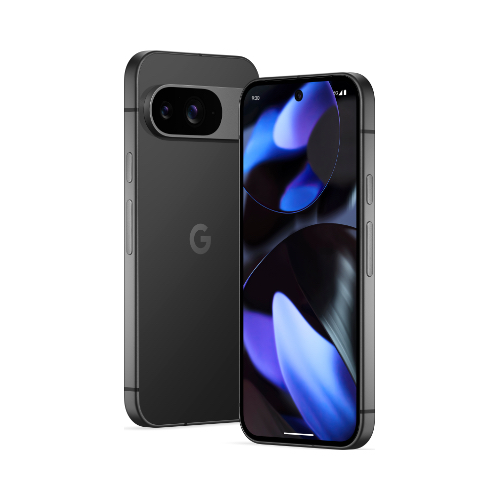
Meanwhile, the Pixel 9 Pro and Pixel 9 Pro XL keep the Obsidian and Porcelain main colors but swap out the other two colors. Additionally, both phones feature shiny side rails. Some colors are matte, while others are shiny glass:
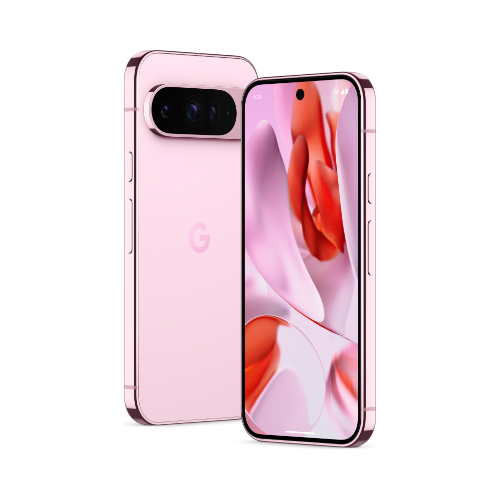
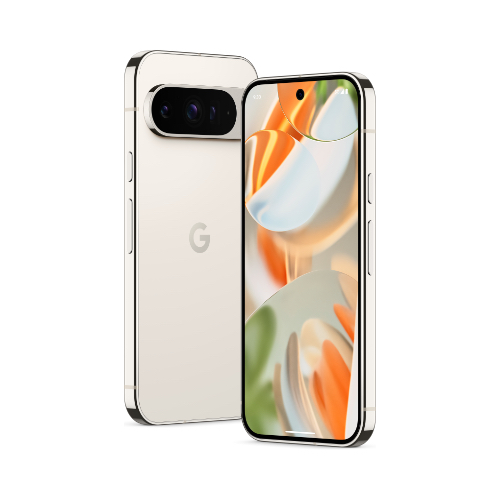
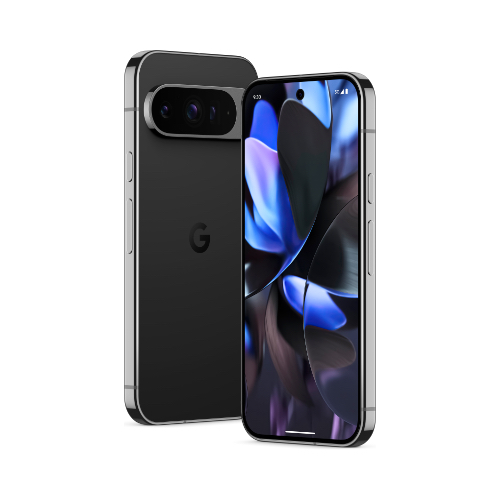
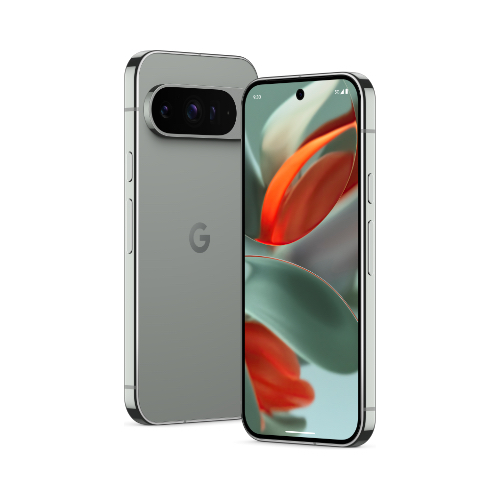
The Google Pixel 9 and Pixel 9 Pro are the same small size, while the Pixel 9 Pro XL gives users the choice of a larger screen.
The Google Pixel 9 sports a 6.3-inch 120Hz AMOLED display with 2700 nits peak brightness that can dynamically adjust from 60-120Hz. The Pixel 9 Pro's 6.3-inch AMOLED and Pixel 9 Pro XL's 6.8-inch AMOLED hit a peak brightness of 3000 nits and can span from 1-120Hz with LTPO technology. All Pixel 9 models use 240Hz PWM dimming.
Google Pixel 9: Cameras
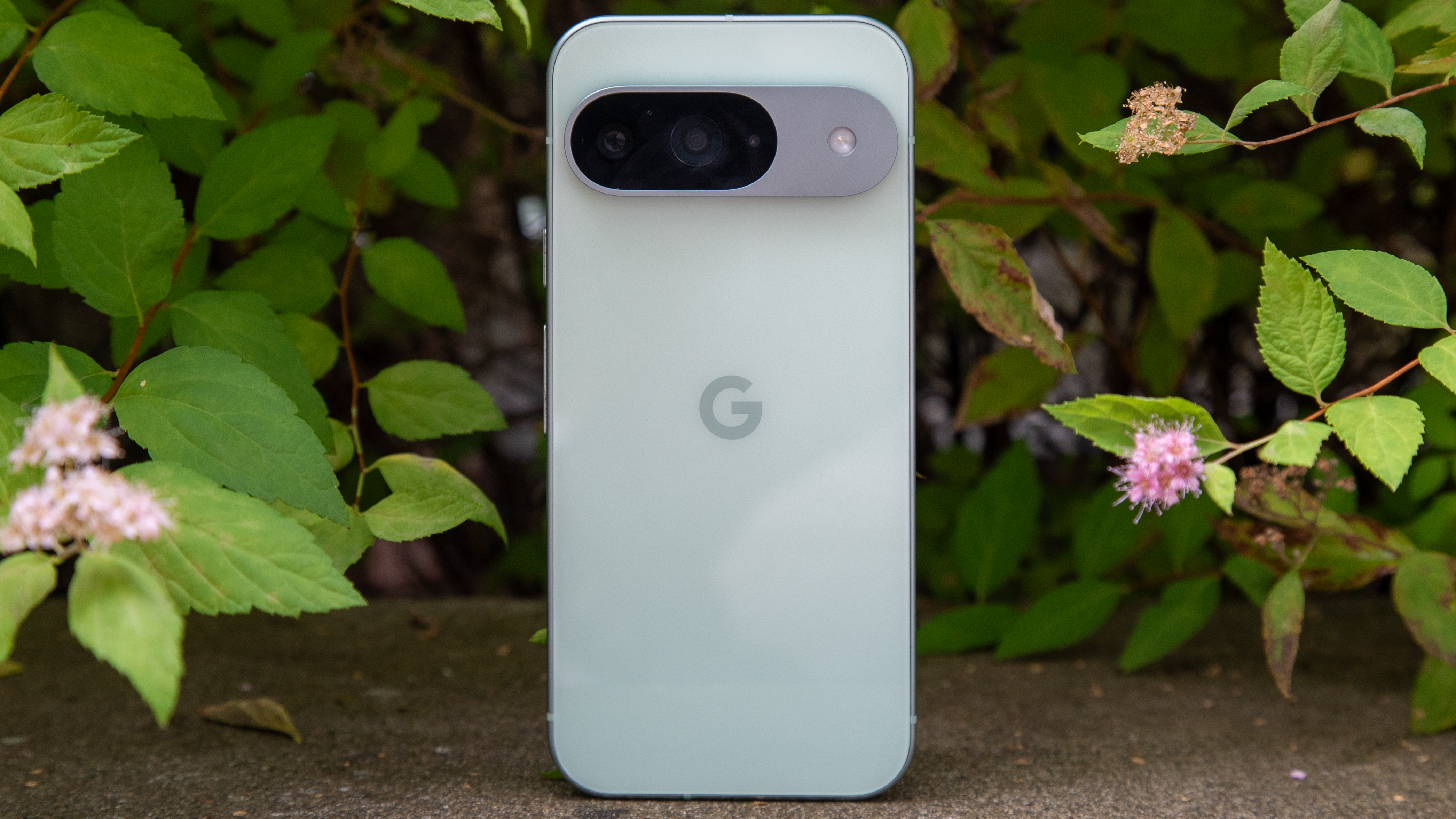
The smallest Pixel 9 got the biggest camera upgrades year-over-year, including an upgraded 10.2MP front-facing camera with autofocus and a brand-new 48MP ultrawide/macro camera that matches the Pro models.
The Pixel 9 Pro models kept the same rear cameras featured on the Pixel 8 Pro but swapped out the front-facing camera for something far more impressive. Both Pixel 9 Pro and Pixel 9 Pro XL featured a new 42MP sensor with autofocus. Of course, there's the image-processing Pixel magic to consider as well. The selfie camera has historically been one of the only weak points of the Pixel camera experience.
Pixels have always had fairly weak video recording skills, but that changed with Video Boost on the Pixel 8 Pro. Google upgraded that and Night Sight Video again on the Pixel 9 Pro, promising even better quality and double the processing speed. The improved processing speed was a much-needed improvement because this is one area where Pixels tend to lag behind.
In addition to some hardware and video recording upgrades, Google injected even more fun AI-based features into the Pixel 9 series. Add Me was introduced as a new way to take group pictures with everyone in it, including the photographer. It works by taking a picture of the group and then taking a separate picture of the photographer where the group stood. We tested it out, and the results were overwhelmingly positive.
Google used a clever combination of AI and AR to recreate the scene and its occupants with a 3D model, then overlayed that onto the live viewfinder image in the Add Me mode. The result was a photo that looks like everyone was physically present at the same time, even though someone had to take the picture.
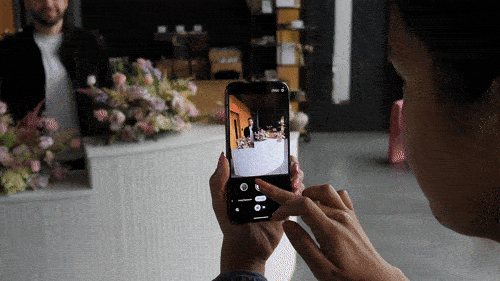
Magic Editor also got an upgrade, featuring the ability to automatically reframe an image or even change out parts of the image for an AI-generated version. The second feature, called Reimagine, works similarly to Magic Eraser on the surface — you highlight or tap an object to select it — but lets you input a text prompt to have Gemini locally generate a replacement for that highlighted object. Reimagine will now add SynthID digital watermarks to photos edited with generative AI for transparency purposes.
In the examples below, we had the Pixel swap out a wall for a waterfall and a mural of Minecraft mushrooms and even completely reframe the shot based on several different photography rules.
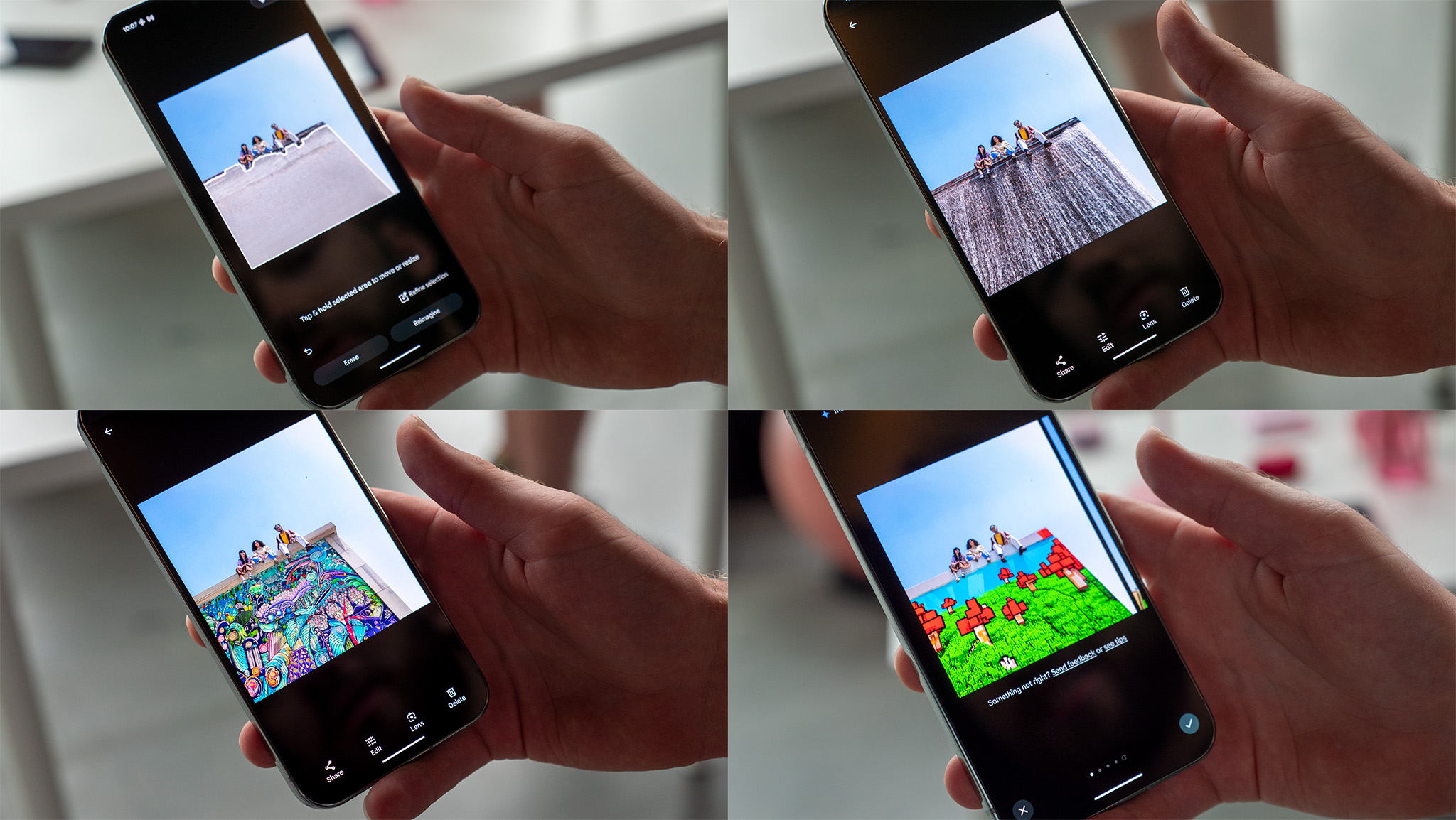
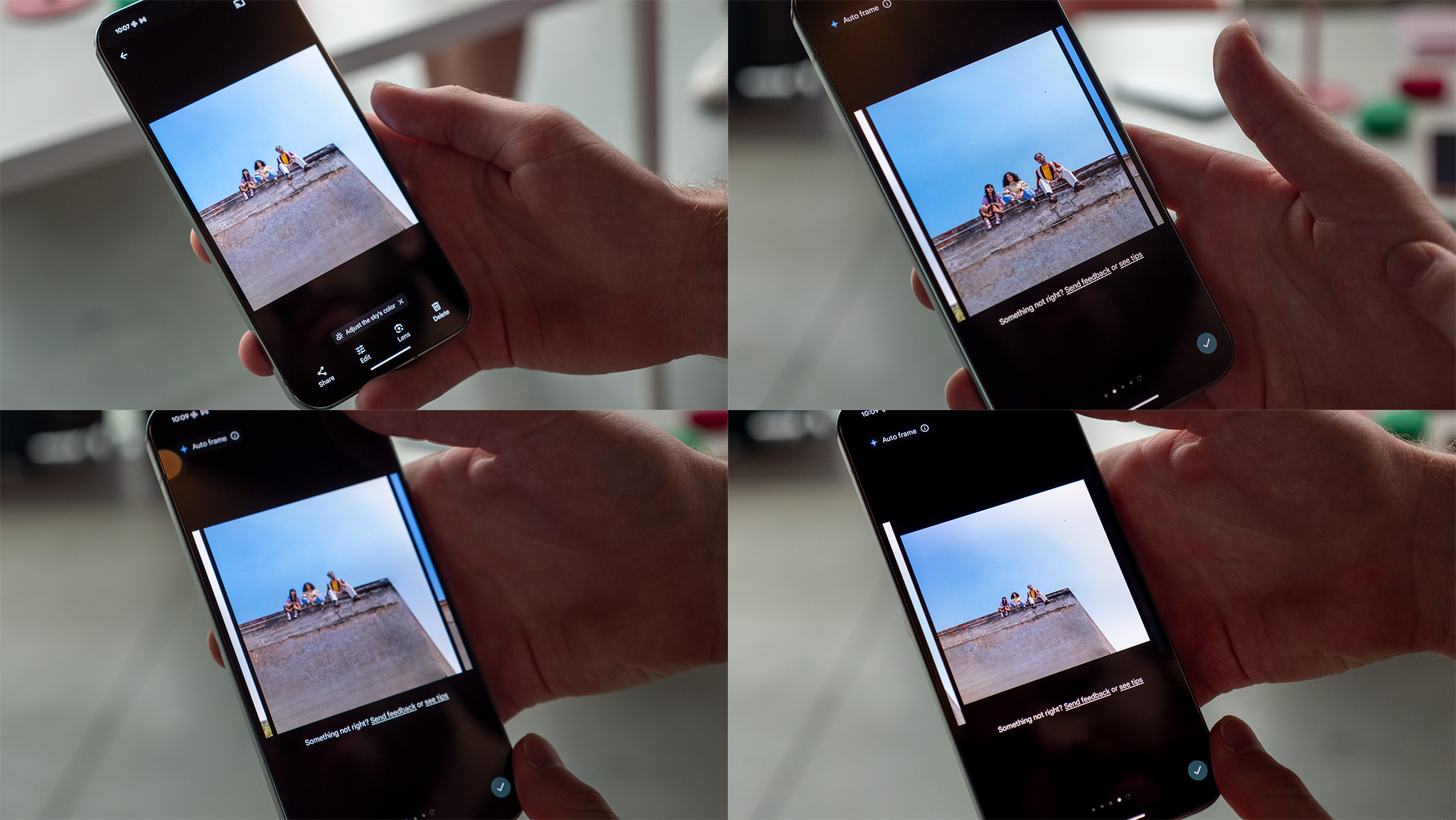
Panoramas got a brand-new UI, so instead of just moving your phone in a straight line in one direction, you'll move the phone to a dot, hold it there for a moment, and then move to the next dot on the screen. This allows Google to capture higher-resolution imagery and to use tricks like Night Sight, helping illuminate even the darkest of nighttime panoramas.
Google Pixel 9: Specs and performance
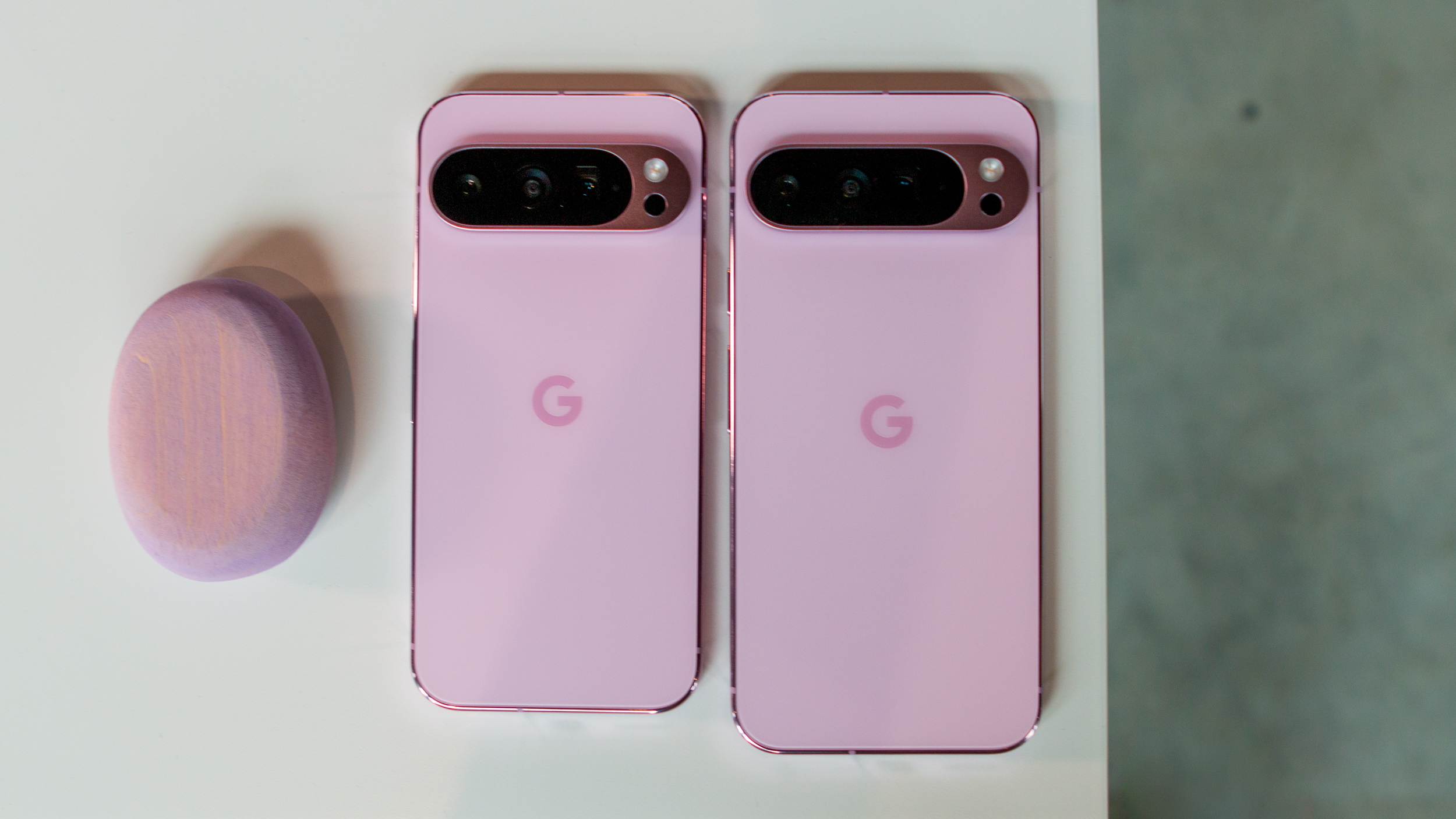
As expected, all Google Pixel 9 models feature a Google Tensor G4 processor. This processor features 20% faster web browsing and 17% faster app launching, plus a substantial upgrade in AI processing capabilities and a cooler design. Tensor G4 is able to process 45 tokens per second for AI tasks, meaning the company can quickly process most AI-driven tasks on the phone rather than send them to the cloud.
That processor went up against the Qualcomm Snapdragon 8 Gen 3 when it launched, which is only capable of 20 tokens per second. However, the newer Qualcomm Snapdragon 8 Elite platform — found in the OnePlus 13, Samsung Galaxy S25, and other 2025 flagships — now supports up to 70 tokens per second. Google's edge with the Tensor G4 quickly slipped away now that the Snapdragon 8 Elite is widely available.
All Pixel 9 models also feature Satellite SOS for the first time ever on a U.S.-based Android phone. Google also swapped out the fingerprint sensor on the Pixel 9, Pixel 9 Pro, and Pixel 9 Pro XL with an ultrasonic sensor. Historically, ultrasonic fingerprint sensors don't work well with tempered glass. Fortunately, none of our reviewers have faced such issues so far.
Category |
Google Pixel 9 |
Google Pixel 9 Pro |
Google Pixel 9 Pro XL |
|---|---|---|---|
Display |
6.3-inch Actua display, 120Hz AMOLED (60-120Hz), 2400x1080, HDR, 2700 nits, Gorilla Glass Victus 2, 240Hz PWM dimming |
6.3-inch Super Actua display, 120Hz LTPO AMOLED (1-120Hz), 2856x1280, HDR, 3000 nits, Gorilla Glass Victus 2, 240Hz PWM dimming |
6.8-inch Super Actua display, 120Hz LTPO AMOLED (1-120Hz), 2992x1344, HDR, 3000 nits, Gorilla Glass Victus 2, 240Hz PWM dimming |
Chipset |
Google Tensor G4, Titan M2 security module |
Google Tensor G4, Titan M2 security module |
Google Tensor G4, Titan M2 security module |
RAM |
12GB |
16GB |
16GB |
Storage |
128GB/256GB |
128GB/256GB/512GB/1TB |
128GB/256GB/512GB/1TB |
Rear camera 1 |
50MP f/1.68, 1/1.13" sensor, Octa PDAF, 82-degree FoV, OIS, 4k/60 recording |
50MP f/1.68, 1/1.13" sensor, Octa PDAF, 82-degree FoV, OIS, 4k/60 recording |
50MP f/1.68, 1/1.13" sensor, Octa PDAF, 82-degree FoV, OIS, 4k/60 recording |
Rear camera 2 |
48MP f/1.7, 1/2.55" sensor, 123-degree wide-angle, macro, autofocus, Quad-PD, 4k/60 recording |
48MP f/1.7, 1/2.55" sensor, 123-degree wide-angle, macro, autofocus, Quad-PD, 4k/60 recording |
48MP f/1.7, 1/2.55" sensor, 123-degree wide-angle, macro, autofocus, Quad-PD, 4k/60 recording |
Rear camera 3 |
N/A |
48MP f/2.8, 1/2.55" sensor, OIS, 5x optical zoom, Quad PD, 4k/60 recording |
48MP f/2.8, 1/2.55" sensor, OIS, 5x optical zoom, Quad PD, 4k/60 recording |
Rear LDAF sensor |
Single-zone laser autofocus |
Multi-zone laser autofocus |
Multi-zone laser autofocus |
Front camera |
10.5MP f/2.2, 95-degree wide-angle, autofocus, 4k/60 recording |
42MP f/2.2, 103-degree wide-angle, autofocus, 4k/60 recording |
42MP f/2.2, 103-degree wide-angle, autofocus, 4k/60 recording |
Connectivity |
Wi-Fi 7, 5G (mmWave and Sub-6), Bluetooth 5.3, NFC, AptX HD, USB-C 3.2, Physical and eSIM, Satellite SOS |
Wi-Fi 7, 5G (mmWave and Sub-6), Bluetooth 5.3, NFC, AptX HD, USB-C 3.2, Physical and eSIM, Satellite SOS, UWB |
Wi-Fi 7, 5G (mmWave and Sub-6), Bluetooth 5.3, NFC, AptX HD, USB-C 3.2, Physical and eSIM, Satellite SOS, UWB |
Ingress Protection |
IP68 dust and water resistance |
IP68 dust and water resistance |
IP68 dust and water resistance |
Security |
In-screen ultrasonic fingerprint module, face unlock |
In-screen ultrasonic fingerprint module, face unlock |
In-screen ultrasonic fingerprint module, face unlock |
Audio |
Stereo sound, USB-C |
Stereo sound, USB-C |
Stereo sound, USB-C |
Battery |
4700mAh, 45W wired charging, 20W wireless charging, 5W reverse wireless charging |
4700mAh, 45W wired charging, 20W wireless charging, 5W reverse wireless charging |
5060mAh, 45W wired charging, 20W wireless charging, 5W reverse wireless charging |
Dimensions |
152.8 x 72 x 8.5mm, 198g |
152.8 x 72 x 8.5mm, 199g |
162.8 x 76.6 x 8.5mm, 221g |
Colors |
Obsidian, Porcelain, Winter |
Obsidian, Porcelain, Hazel, Rose Quartz |
Obsidian, Porcelain, Hazel, Rose Quartz |
Software support |
7 years of Pixel and OS updates |
7 years of Pixel and OS updates |
7 years of Pixel and OS updates |
All Pixel 9 models feature larger batteries and faster charging. The smaller Pixel 9 and Pixel 9 Pro can fast charge to 55% in 30 minutes using Google's new 45W charger, while the Pixel 9 Pro XL can reach 70% in that same 30 minutes. Charging speed slows down after that, but this should be great for those times you need a quick top-up before going out the door.
The Pixel 9 sports 50% more RAM than the Pixel 8, with 12GB of RAM this year. Both Pixel 9 Pro models increase that to 16GB of RAM, meaning no matter what Pixel you get this year, it'll have the most RAM ever for a Pixel phone of its size.
Google Pixel 9: Software
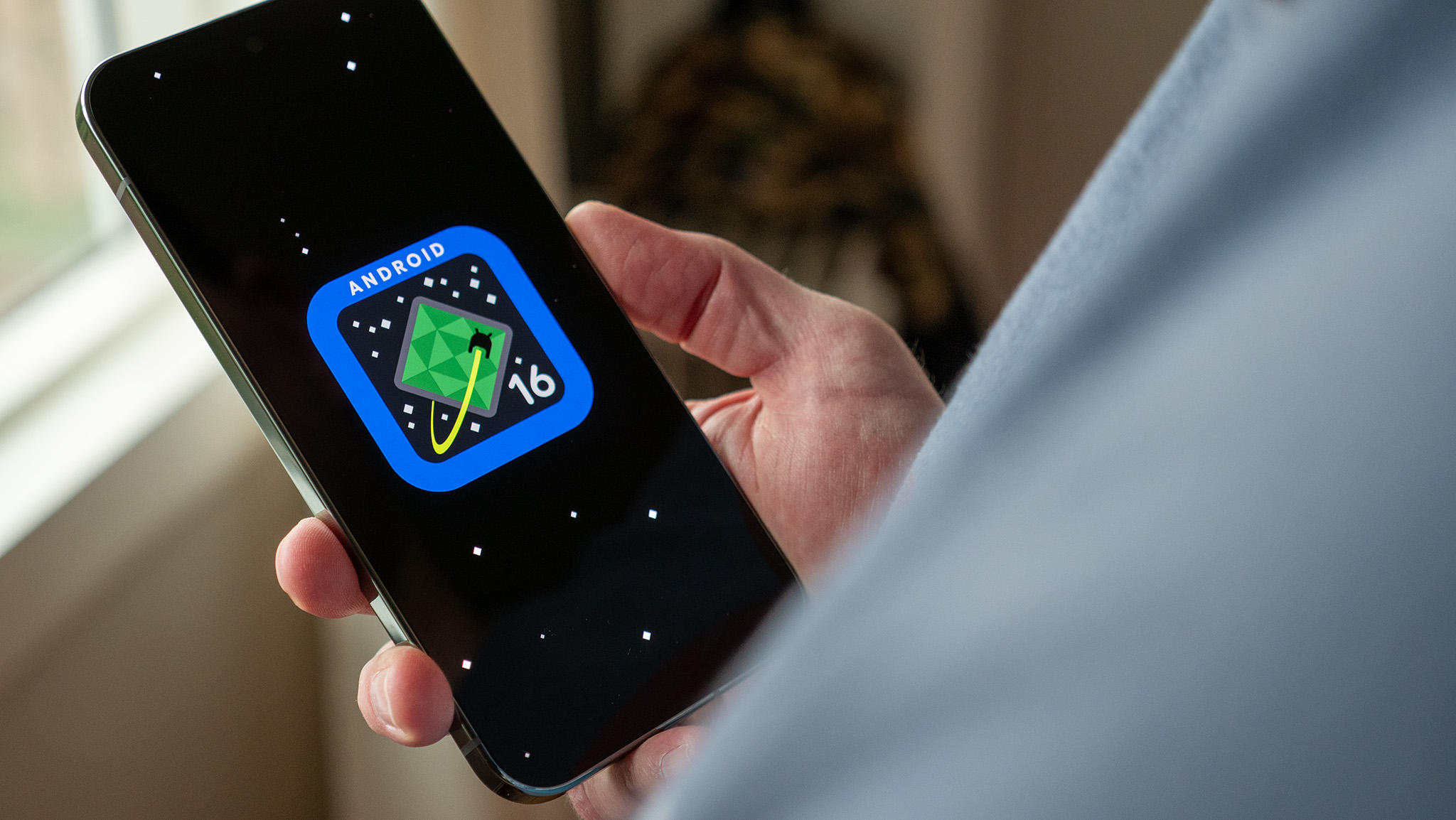
Currently, Android 16 is available on all Pixel 9 models, bringing features like hybrid auto-exposure and expanded UltraHDR support.
At launch, Google used the Pixel 9 to debut several new software features, even though the new phones launched with the nearly year-old Android 14 at the time. This includes Gemini Live, a new conversational interface for Google's latest digital assistant. With it, talking to Gemini now feels more human, complete with 10 different voices and the ability to interrupt or change the subject at any time, as you might a real person.
All Pixel 9 models also come with the first year of Gemini Advanced for free, which normally costs $20 per month as part of a Google One subscription. That gives you access to the most cutting-edge AI features, including image generation, document analysis, and more.
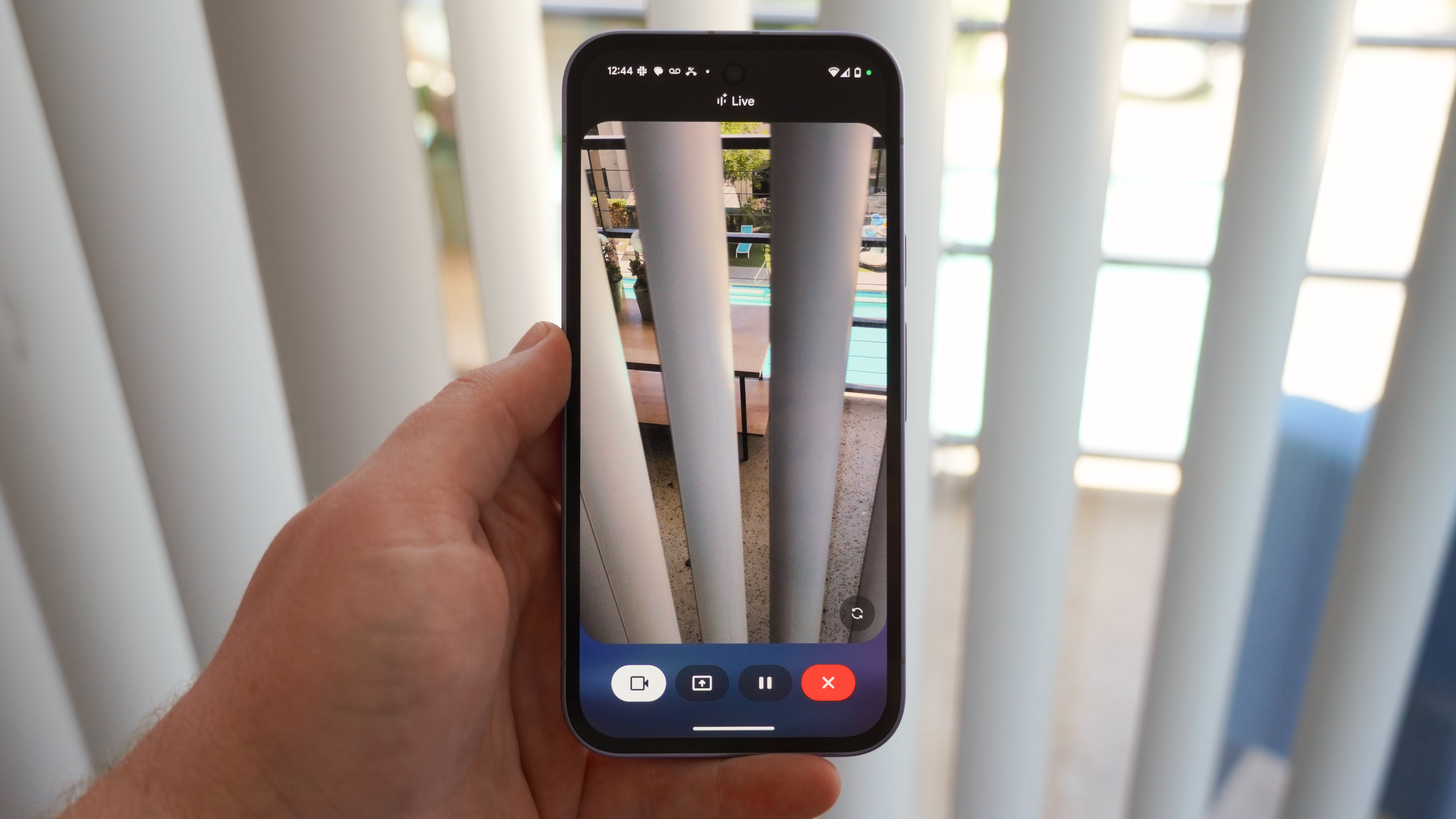
The entire Pixel 9 series also gets multimodal Gemini Live with screen sharing and live video streaming completely free, for life. Users of other Android smartphones need to pay for Google One AI Premium to get this feature.
But if that doesn't sound like something you care about, don't worry. Google also launched a handful of new Pixel apps with the Pixel 9 series. Pixel Screenshots is a new app that categorizes your screenshots and lets you search through them as you might make a normal Google search.
It utilizes Tensor's powerful AI processing capabilities and catalogs every bit of information in every saved screenshot, which is incredibly handy for notes, calendar entries, and just about anything else you can think of.
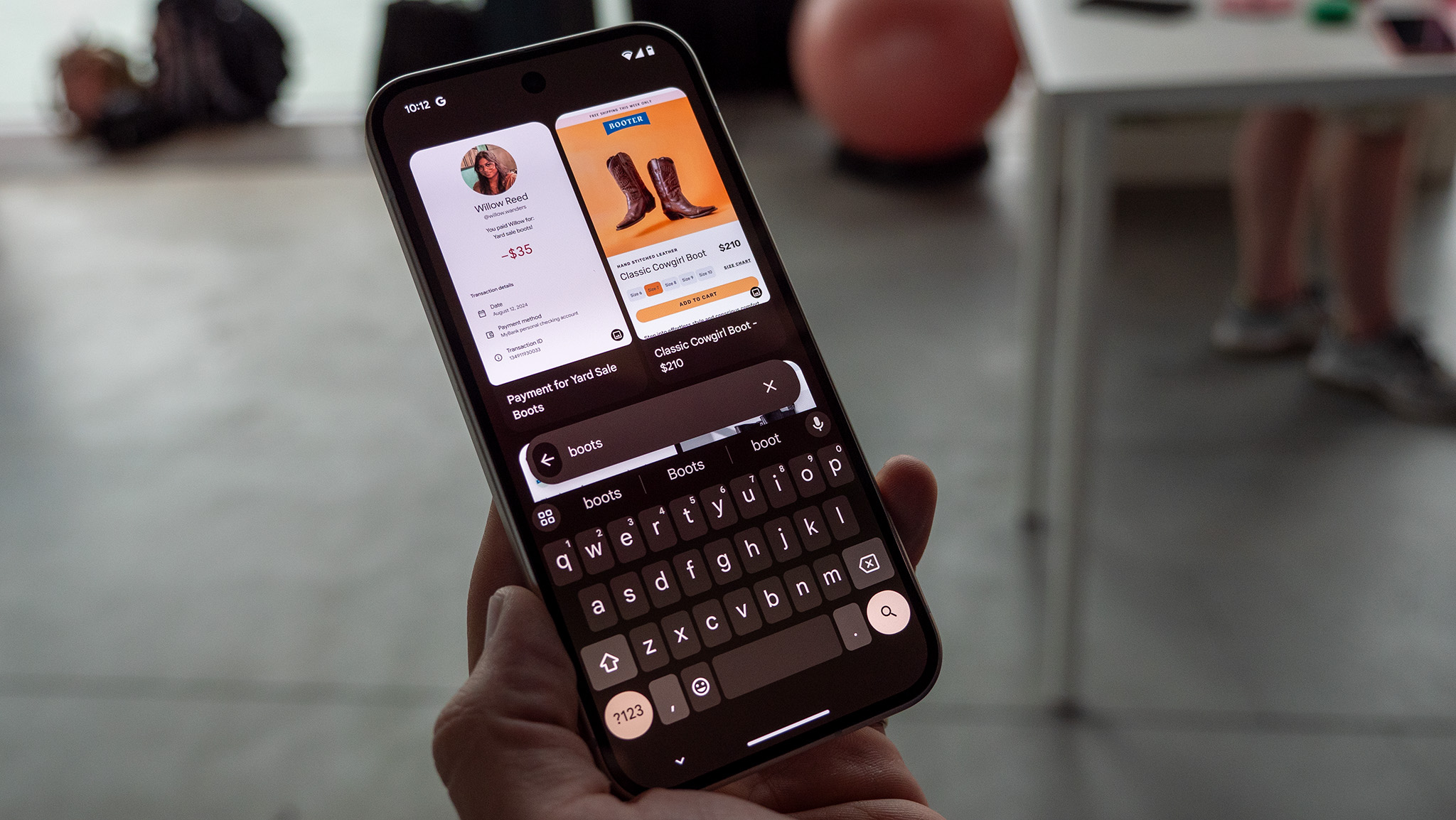
Call Notes is another incredible new addition to the dialer app that allows you to generate a transcript and an AI-powered summary of each call with the press of a button. While on a call, tapping the Notes button will announce that the call is being recorded, with a full transcript and summary of the call being presented after you hang up.
This, in addition to Satellite SOS and improved Clear Calling features, means communication and phone calls are still best on a Pixel.
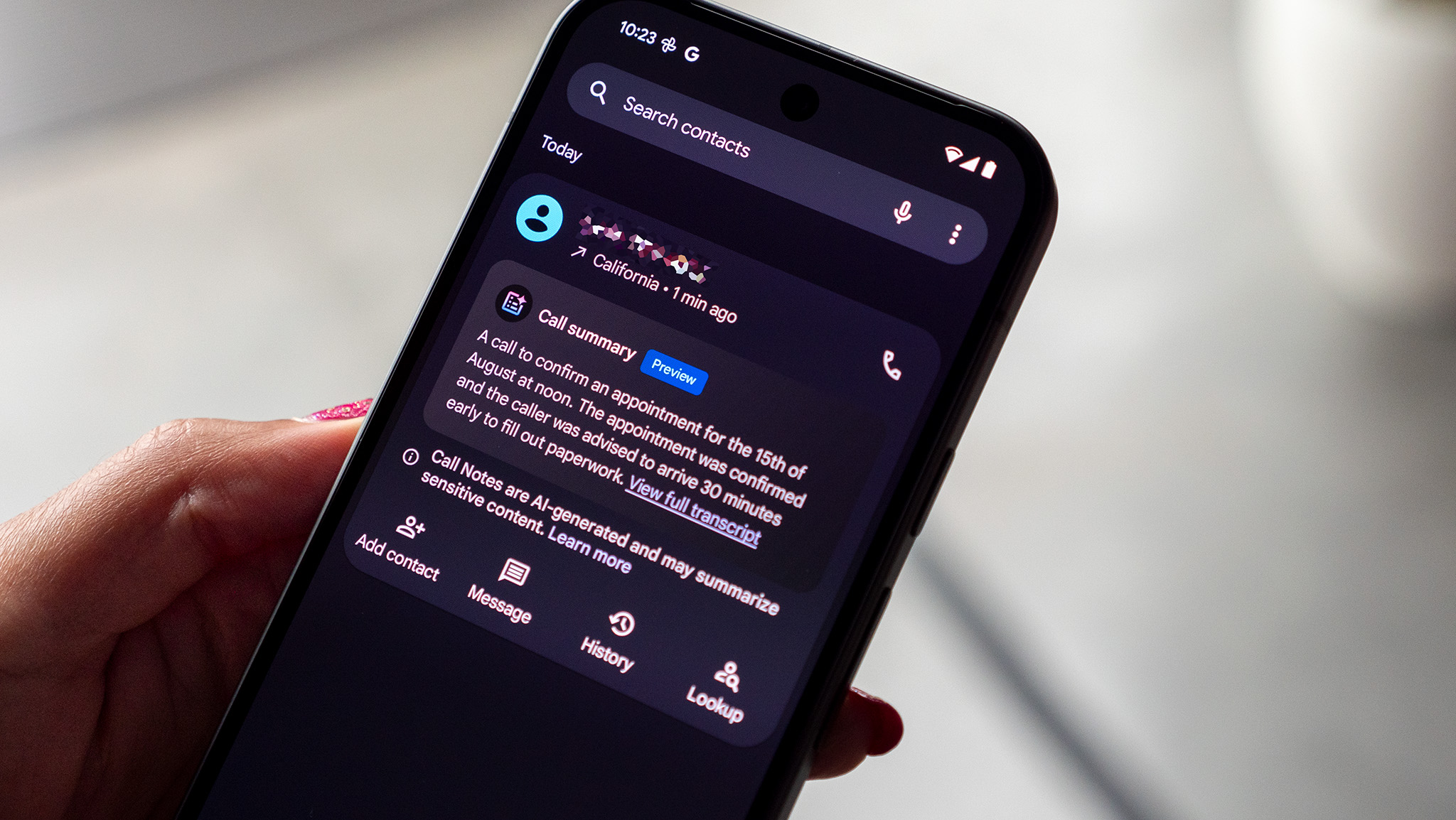
Pixel Weather is an overhaul of the existing Google Weather app, adding lots of additional information and even including an AI-generated summary. That gives you the most glanceable way to plan your day yet.
Pixel Studio is a new image generation app that utilizes on-device processing to create AI-generated images based on text prompts. But this isn't just some silly use-it-once-and-forget-about-it app; it's designed to help you make new memes, custom emojis, and stickers, and even create flyers or other documents with a few taps.
All in all, it wraps up a rather nice year of notable feature updates and additions for Pixel fans and new Pixel users alike. What makes a Pixel more exciting to own is that Google keeps its Pixel phones fresh with monthly Pixel Feature Drops. With time, you'll surely get newer features, tools, and options as you continue to use a Pixel 9 series device.
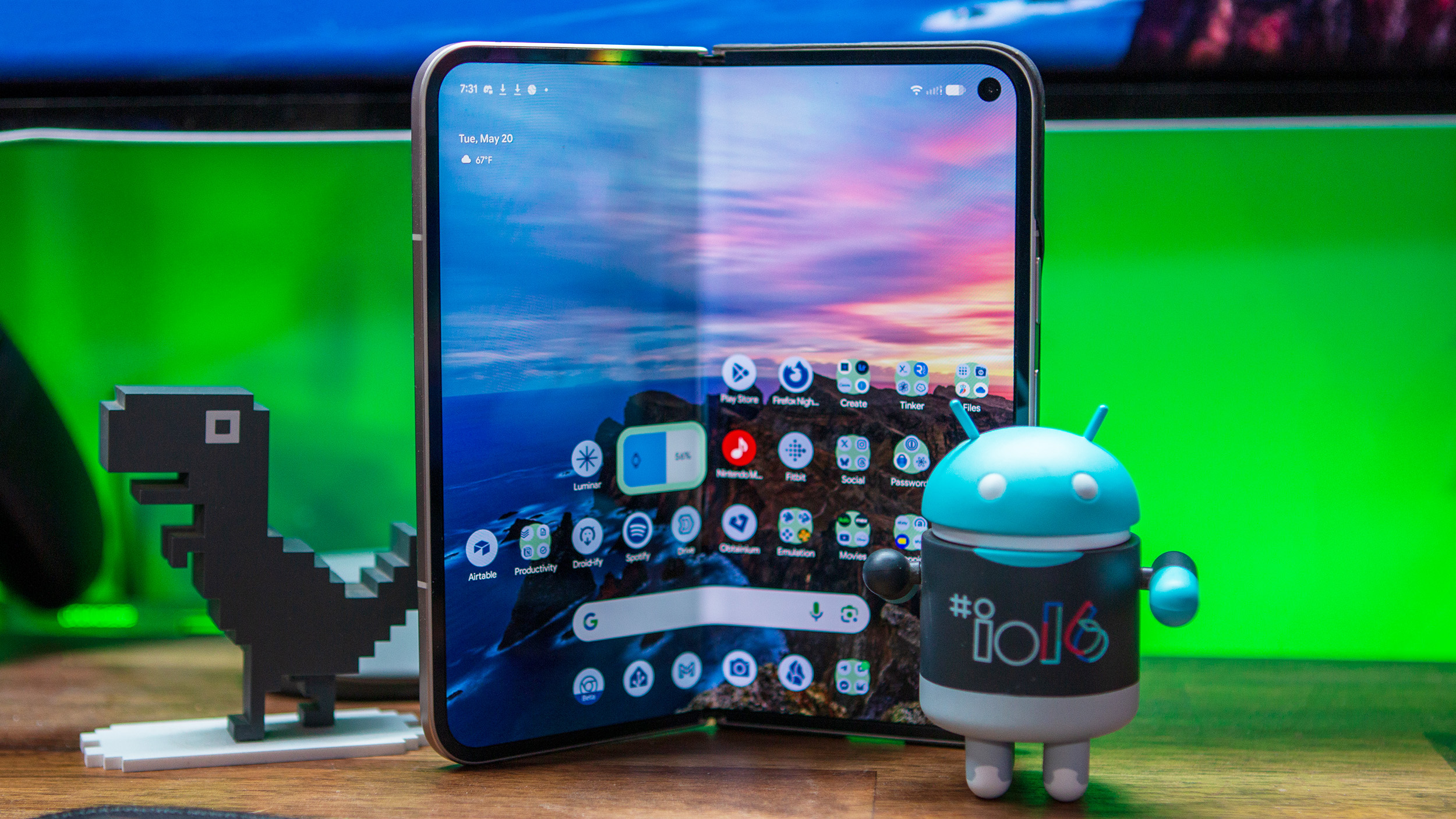
Google brought changes to the Pixel 9's Phone app. The app was upgraded with new sorting for missed calls, including All, Missed, Contacts, Non-Spam, and Spam. You'll be able to find them in the Recent tab of the Phone app on any Pixel 9 series device. The company also did a UI refresh for the call screen, which was intended to make Call Assist, Call Notes, Direct My Call, and Audio Emoji more prominent.
The May 2025 security update was a must-install update that included fixes for a zero-day security issue that could be actively exploited. Plus, the May 2025 update included anti-rollback measures. This means after you install the patch, your phone won't be able to run older versions of Android 15. It's a measure intended to prevent bad actors from flashing vulnerable firmware in order to exploit patched security flaws.
The March 2025 Feature Drop for the Pixel 9 series added scam detection for calls. Additionally, the Find My Device network now lets you track the location of other people, helping you monitor their safety from afar. Plus, the Pixel Studio app can now generate images of people.
The June 2025 feature drop for Pixels added tons of cool features, such as Pixel VIPs, new LE Audio features for users with hearing aids, and custom sticker creation via Pixel Studio.
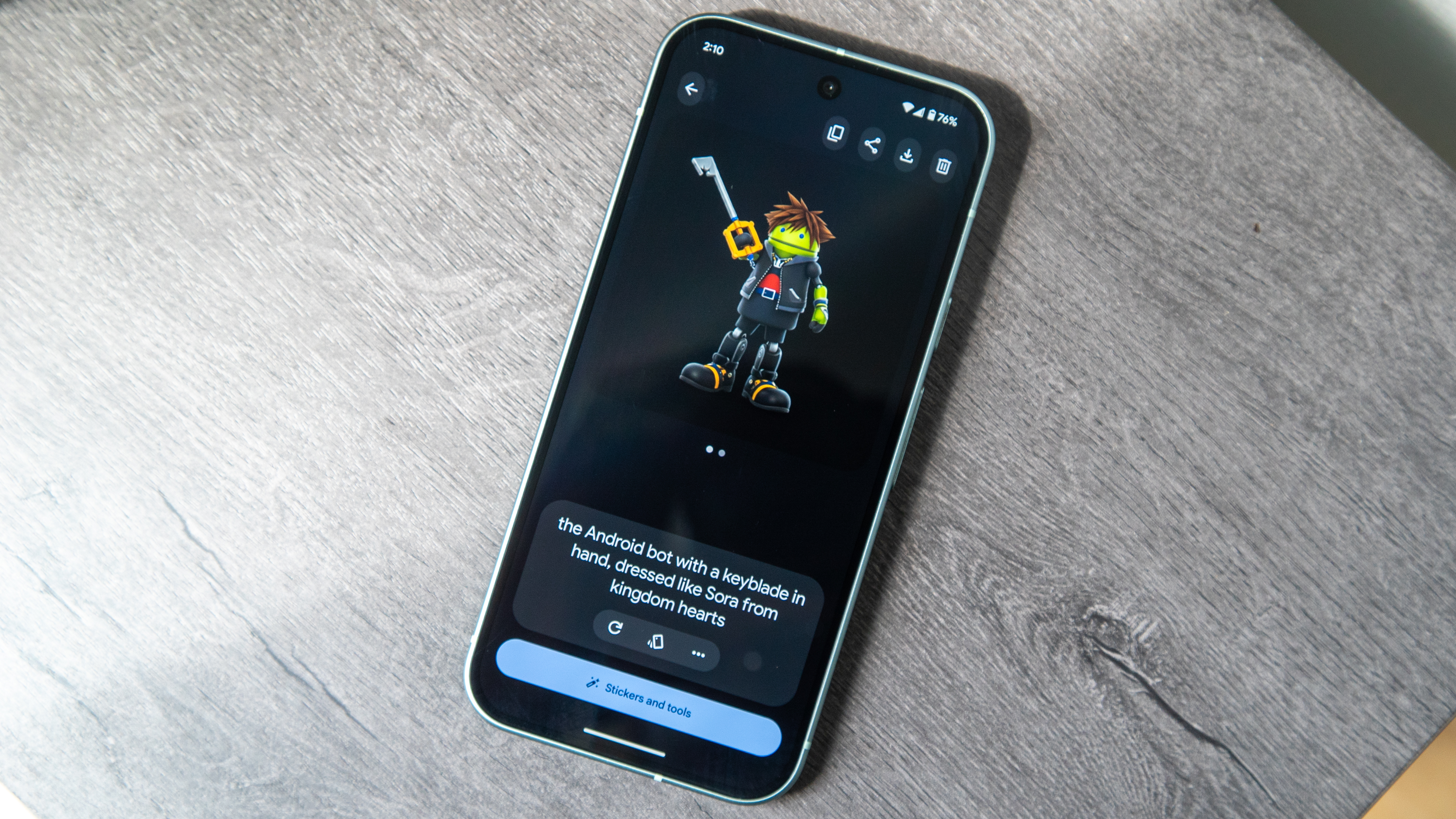
The Pixel 9 series also got the new Find Hub, a singular location for people, device, and item tracking. UWB-equipped devices are now able to use more precise nearby item locating in the Find Hub. Unfortunately, UWB is only on the Pixel 9 Pro, Pixel 9 Pro XL, and Pixel 9 Pro Fold, so the base-model Pixel 9 and the budget Pixel 9a won't be able to use this feature.







